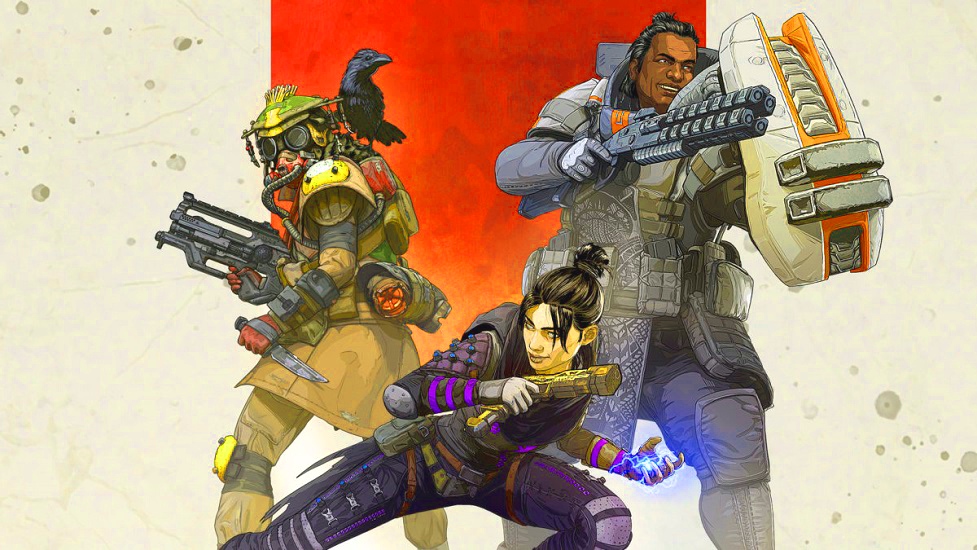If you’ve been anywhere near a gaming blog or gaming twitter this week, you’ve heard something about a new game called Apex Legends. A couple aspects about Apex’s release caught my attention. The first was Respawn Entertainment’s decision to move from Titanfall, a critically acclaimed series with particularly lauded campaigns, to a free-to-play, squad based, battle royale game with heroes. On top of that, the release didn’t have a hype cycle that AAA titles usually do. Instead, Respawn employed “The Beyoncé Drop”, that is: releasing the game with no public announcement before (or two days notice if you count leaks). A release like this may seem like a gamble, but after examining trends in the game industry, it actually shows some clever thinking.
Apex Legends’ success marks a shift in the way AAA games are being designed and marketed, Respawn took notice of the rising influence of Youtube and Twitch, and decided to target streamers and their viewers as their audience. They took hints from battle royale games like Fortnite and hero shooters like Overwatch and combined them to great effect. And it payed off. After three days, the game has over 2 million players and is the most viewed game being played on Twitch at the time of this writing.
Respawn’s success story with Apex Legends got me thinking about a few questions. What makes battle royale so attractive to streamers? How do you design a game experience for streamers and their viewers? What does the future hold for games designed for streaming?
One of my favorite things about battle royale games is how dynamic the game experience is. One match I will land in an extra spicy area and get taken out quick. The next match, I might be top 5. Each match is its own contained story. Players drop in, establish their loadout. This is followed by the rising action with the area of play closing, forcing conflicts. The final moments of battle royale matches are some of the tensest moments I’ve experienced in games. The power of emergent player stories that come out of battle royale matches is so potent that thousands of viewers watch streamers play these games every day.
There’s a problem though: Free-to-play games rely on constant streams of microtransactions to be profitable. After a while, players may grow bored of the game and move on. So how do you design a game to keep players and viewers interested over long periods of time? Well developer’s have again begun to tap into the power of story.
For example, Fortnite, and now Apex Legends, have seasonal battle pass systems where the map will be updated and the more lore about their universe is revealed. Blizzard takes the narrative route even further by occasionally releasing delightful animated shorts about their Overwatch heroes and their stories. Seemingly taking hints from the Television industry, developers have found a way to keep streamers coming back with seasonal content updates. “Tune in and catch me at Tilted Towers but this time the map looks like the set of Black-ish!”
So what’s next for games designed for streamers and their viewers? Clearly there’s huge opportunities for more audience interaction between the streamer and player. I’m also excited to see more experiments like Twitch Plays Pokemon and Twitch Plays Dark Souls.
Perhaps streamers and developers will collaborate and take a little inspiration from professional wrestling (and hip-hop) and embrace kayfabe. Kayfabe is the convention of presenting staged performances as genuine or authentic. To some extent, kayfabe is already used in some gaming communities. Professional fighting game players have been forming their own player gimmicks, like dressing like their main fighters for competitions. Some bombastic twitch personalities like Dr Disrespect already do this to an extent, but nothing resembling the stories core to professional wrestling. Some manufactured beef between two rival streamers leading up to their semi-final match could lead to some massive viewership!
“The audience will not tune in to watch information. You wouldn’t, I wouldn’t. No one would or will. The audience will only tune in and stay tuned in to watch drama.”
These words by playwright, screenwriter, and director David Mamet have been taken to heart by creatives all over the spectrum. Stories are humanity’s way of parsing our experiences. It makes sense then that game designers are starting to see the potential of including an audience outside their players into their stories. Time will tell what new kinds of stories will come from this sea change in the industry. Whatever they are, I can’t wait to experience them.

